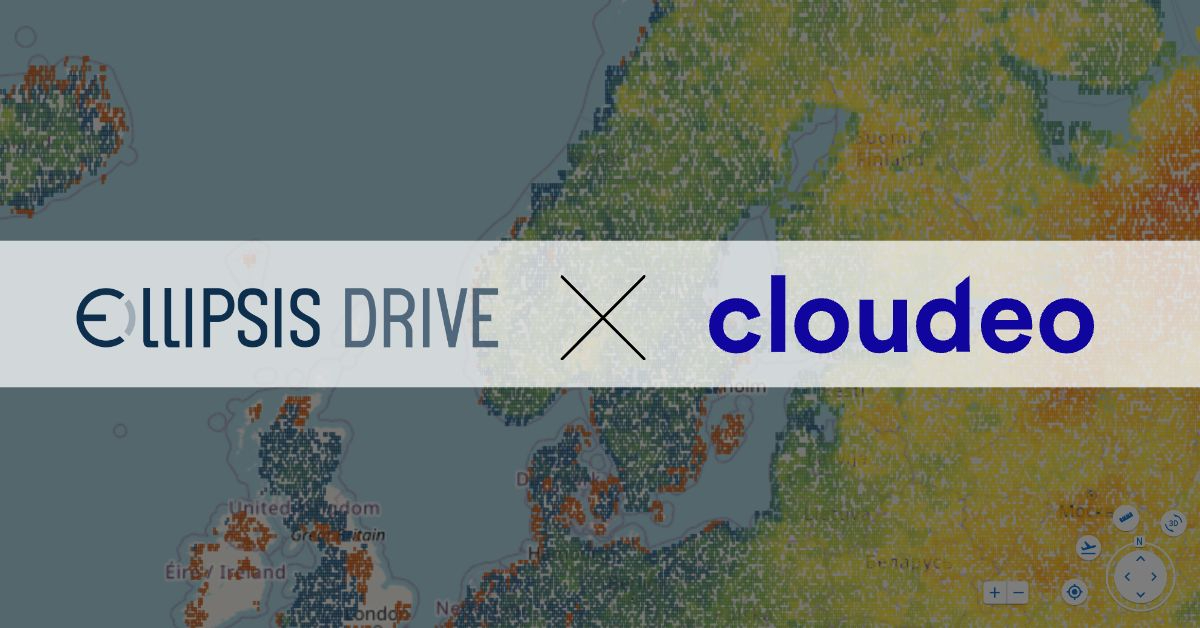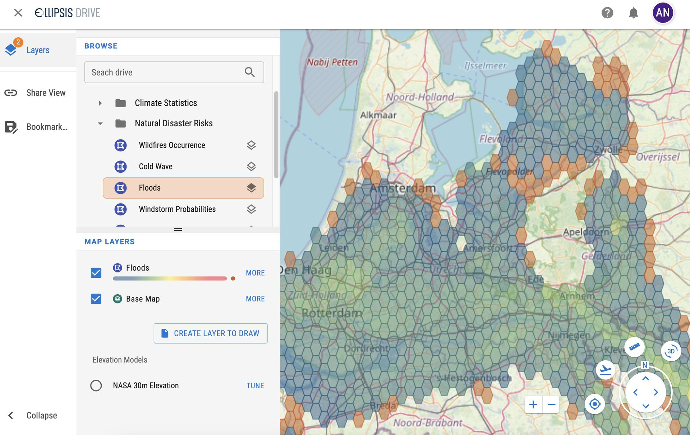Cloudeo and Ellipsis Drive are proud to announce the integration of answr, Cloudeo's advanced climatic risk forecasting and analytics platform, with Ellipsis Drive, the cloud-based storage and file-sharing platform for spatial data. This integration is designed to provide businesses and organizations with an innovative way to manage and understand climate risks and natural hazard forecasting, enhancing strategy building and business decision-making.

Answr is an API-based platform that processes complex geospatial data to provide advanced risk and forecasting analytics for climate hazards and extreme events. It is ideal for various industries, including governments, insurance, real estate, renewable energy, and green tech. Ellipsis Drive, on the other hand, is a cloud-based storage and file-sharing platform that converts uploaded spatial files into live maps and web services. It also organizes these files in a familiar manner, similar to drives used for office documents, providing users with an intuitive and user-friendly experience

Empowering Insurance, Real Estate, and Agriculture Industries
With the integration of answr's risk and forecasting analytics with Ellipsis Drive's cloud-based storage, visualization, and sharing capabilities, businesses can make informed decisions for the mitigation of natural disaster risks.
“The partnership is a great example of how to make spatial data more accessible and useful for the insurance, planning, and civil engineering industries”, said Ellipsis Drive CEO, Rosalie van der Maas. Insurance companies, the main customers of answr platform, can now visualize answr's data layers through Ellipsis Drive to better understand the potential impacts of climate hazards and price risks associated with extreme events.
Real Estate businesses can manage and store answr’s climate risk forecasting data through Ellipsis Drive; in this way they will be able to assess current and potential future climate risks for all properties in their portfolio, including hazards such as flooding, sea level rise, extreme heat, and wildfires, and collaborate more effectively with other real estate industry actors and stakeholders, such as lenders, insurers, and government agencies, to develop and implement comprehensive climate risk management strategies.
Similarly, the Agriculture industry can now leverage the easy visualization and sharing of natural risk data on a local scale and make informed decisions on the adoption of more sustainable agricultural and water management practices.
About Ellipsis Drive:
Ellipsis drive seamlessly lets users manage, access, and consume spatial files and instantly render them into workflows, apps, and tools of choice. With industry-leading data performance, unlimited data queries and content sharing with as many people as users may need, Ellipsis Drive supports the current and future needs of any company that deals with spatial data. Learn more here.
About answr:
Cloudeo develops in-house solutions for targeted markets, including the brand-new analytics platform, answr (www.answr.space). Answr provides advanced risk and forecasting analytics for climate hazards and other extreme events by processing complex geospatial data. It is designed for governments, insurance, real estate, renewable energy, and green tech companies and integrates directly with asset management software and ERP systems. Discover more.